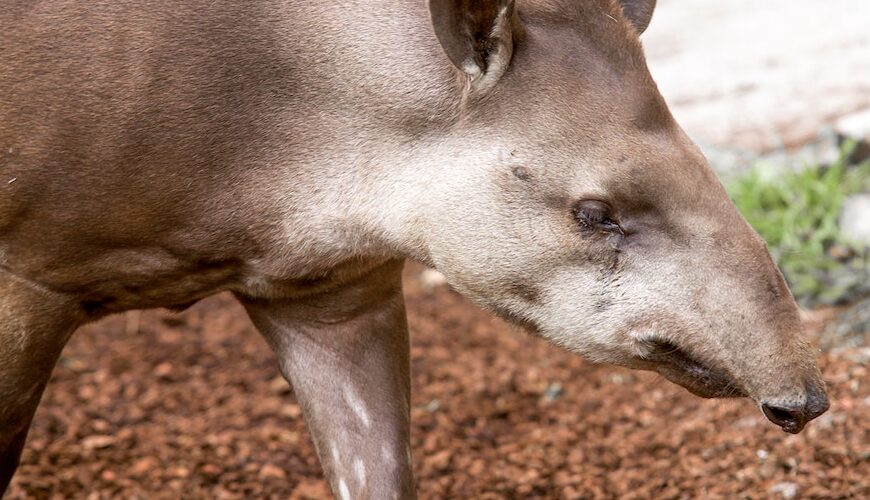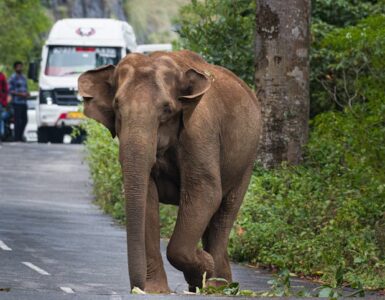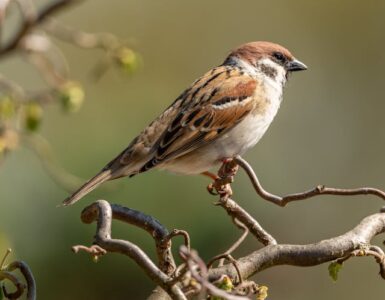If you have been to multiple zoological gardens, chances are that most of the animals in different zoos are the same – Elephants, Tiger, Rhinos, Zebras, Giraffes, Deer, Tortoise, etc.
There might be variations here and there, but most zoos have similar animals. These animals are probably selected because they are cool to look at, dangerous, cute, or unique.
We will not get into the debate of whether zoos are needed or not, but zoological gardens play a role in our first interaction with wildlife, especially for those who live in cities.
The animals we encounter in a Zoo, are all wonderful, but they represent a very tiny sample of our Planet’s biodiversity. Our nature is blessed with millions of animals, hence that sample is not enough.
Therefore we have picked another small set of land-based weird animals, that you might not encounter in a zoo, but thanks to their colors, unusual patterns, and other freakish adaptations, these animals need to be recognized.
Giraffe Weevil
When we talk about animals with long necks, a picture of Giraffes immediately springs to our mind. However, there is one teeny-tiny insect that is extremely fascinating because of its weird neck.
This funny-looking insect borrows its name from the bigger creature, it is called the Giraffe Weevil. These little creatures are only about 1-2 inches long and live on the island of Madagascar.
Just like giraffes, the necks of male giraffe weevils are pointed upwards and can be up to half the length of their entire body. The neck is very flexible, and he can bend it from side to side or front to back. The thing to note here is that only the male giraffe weevils have super-long necks, females have much shorter necks.
Also, similar to Giraffes, male insects use their necks to establish their dominance. This happens when male Giraffe Weevils meet, they swing their long necks battling each other to impress females. They also use their lengthy necks to strike each other off branches as they compete for mates.
Their necks allow them to reach leaves and fruits that are higher up in the trees than other bugs can get to.
Want to know more about the importance of Giraffes? Read here.
Blue-footed boobies
Many birds in our biodiversity captivate us with their vibrant colors, but when you look at the top part of Blue-footed Boobies, they will not arouse any curiosity. As you look down on their feet, you will be amazed.
The name aptly defines these birds, their blue-colored feet are their highlight and it is not just a beauty spot it has a purpose. The birds that have the brighter tinge of blue are associated with youth, fertility, and higher competence.
During the courtship dance, the male shows off the brightness of his feet by exaggerating their walk to impress the female. Females are inclined to select males with the brightest blue feet as partners.
These birds are mostly found along the Pacific coast in Mexico’s Gulf of California, Peru, and the Galápagos Islands.
Blue-footed boobies can go well below the water surface to hunt for their prey like sardines, anchovies, and squid.
Vietnamese Mossy Frog
Vietnamese Mossy Frog lives in the moss-covered mountainous rainforests in northern Vietnam and nature has bestowed them with a skin that can easily camouflage in their habitat.
The green color and visible tubercules make them appear like pieces of moss which allows them to blend into the moss-covered rocks in the rainforest habitat.
Vietnamese Mossy Frog spends most of their time hiding in the water under rocks, waiting to hunt large insects such as crickets and cockroaches.

Birds of Paradise
Birds of Paradise are one of the most unique birds in our biodiversity, not just for their fancy adaptations but also for their expressive dance moves. The male species of these birds make incredible formations, display their vibrant colors, and perform some extravagant dance moves to impress their females.
There are many different species of Birds of Paradise and are found primarily east of the Wallace Line, in Papua New Guinea, Eastern Australia, and the Islands of Indonesia.
We have featured Birds of Paradise in another article, you can read it here.
White Peacocks
Peacocks are generally associated with their green bodies and vibrant feathers. Thus to find a peacock that is devoid of any colors is strange.
Native to India, these white peacocks are born with a genetic condition called leucism that causes a lack of pigment in their feathers, but not in their eyes. The white peacocks look equally stunning.
White peacocks have cultural and religious significance as they are believed to bring luck prosperity and well-being.
Magnificent Frigatebird
Imagine looking at a bird that seems to be holding a heart-shaped balloon.
The male species of Magnificent Frigatebird have bright red pouches called gular sacs under their throats. To attract a female, males inflate their throat pouch to look like a large red balloon and perform mating dances which involve raising their beak high into the air.
The magnificent frigatebird is found in the southern United States, Mexico, and the Caribbean.
Using their large wingspan, which is longer than most humans about 7-8 feet, they can remain in the air for extended periods. The interesting bit is that these birds don’t hunt for their prey instead intimidate and chase other birds to steal food from them.
Tapirs
We generally know Elephants as the only animals with a long nose or trunks, but there are other animals as well in our wild, who have similar adaptations.
Tapirs are large, herbivorous mammals with prehensile snouts that are somewhat similar to trunks. These snouts are used for grasping leaves, fruits, and aquatic vegetation, making them effective browsers and swimmers.
They live in Central and South America and Southeast Asia.
Colugos or Flying lemur
Colugos, also known as Flying Lemurs are arboreal gliding mammals.
Similar to the physiology of bats, their limbs from the neck to the fingers, toes, and nails are connected to a membrane of skin. They technically don’t fly but use their outstretched limbs to smoothly glide great distances between trees.
These weird animals can be found clinging to the trees in the forests of Southeast Asia.

Tarsiers
Tarsiers are one of the smallest primates in the world and are native to Southeast Asia. Having said that their eyes are the biggest of any mammal relative to their body weight and in some cases larger than their entire brain.
These unique physical features give Tarsiers a unique alien-like appearance.
We have written a detailed article on Tarsiers, you can read it here.
Pangolin
Pangolins are identified by their scaly skin which gives them a unique appearance and identity and are found in Asia and Africa.
Though many of us think of them as reptiles, Pangolins are the only mammals with wholly covered scales which they use to protect themselves from predators in the wild. If it feels threatened, it will cover its head with its front legs, exposing its scales to any potential predator.
Another interesting thing to note is that Pangolin do not have teeth, hence they pick up food ants, termites, and larvae with their sticky tongues.
Pangolins are the most trafficked mammal in the world for their meat, traditional medicines, and leather, which is used to make boots, bags, and belts.
Wrapping Up
The above sample of weird-looking animals and birds is only from the land, nature’s creation that exists underwater is even more strange and spectacular.
The idea behind making this list was to not only admire nature’s creation but also raise awareness about its protection and conservation.
Here is a video that you can watch, where we have showcased 9 weird animals.






Add comment